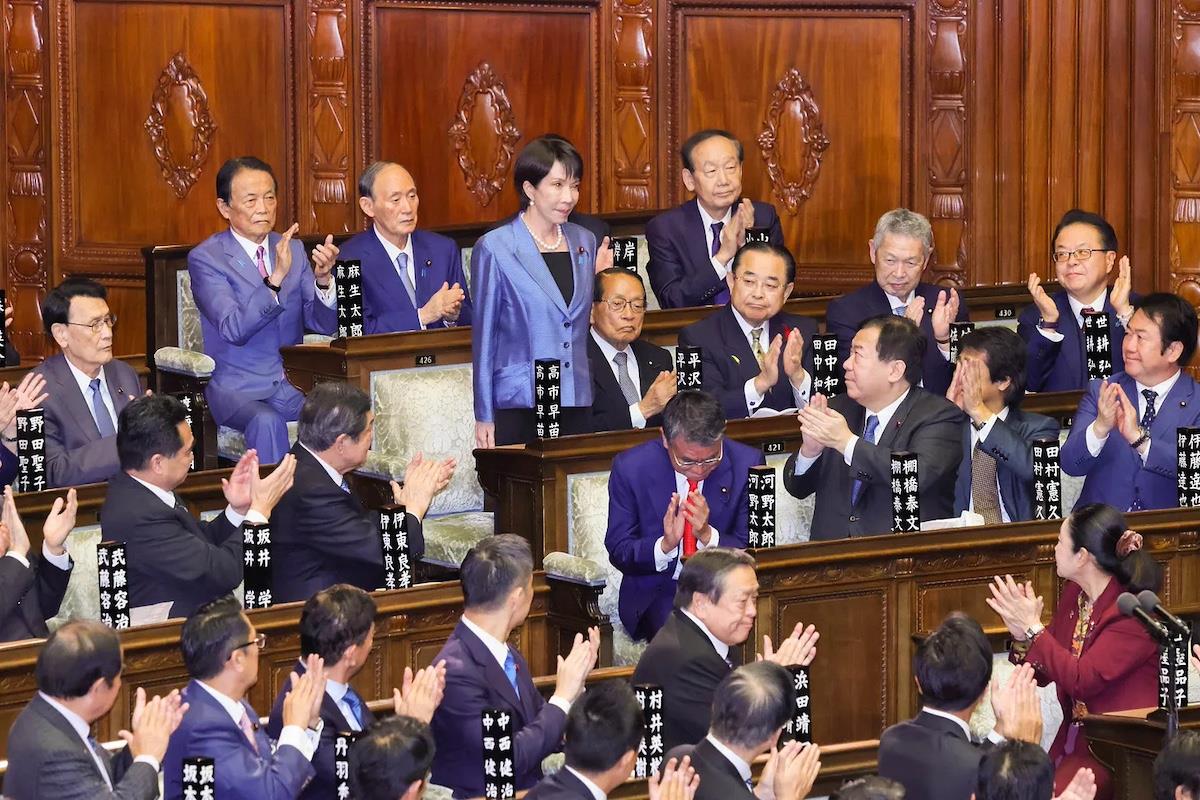
What Takaichi's Arrival Means For Japan
As expected, Takaichi Sanae won comfortably, though it took a second ballot to secure victory in the House of Councillors. She won in the first round in the House of Representatives with 237 votes – she picked up various independents and quasi-independents in addition to the LDP's 196 votes and Ishin no Kai's thirty-five votes – and then defeated the Constitutional Democratic Party's (CDP) Noda Yoshihiko in the second round in the upper house with 125 votes to Noda's forty-six.
She received a vote in the runoff from Democratic Party for the People (DPFP) lawmaker Kobayashi Sayaka, who said after the fact that she had apparently voted for Takaichi by mistake.
After ceremonial meetings with party leaders and officers of the two houses of the Diet, she conferred with Ishin no Kai officials – in which they celebrated the launch of a“full-fledged reformist conservative coalition government” – then announced her cabinet (see below), after which she attended the investiture ceremony at the Imperial Palace and held her first press conference at prime minister (see below).
Takaichi's first order of business was, of course, to announce appointments to the cabinet and other senior executive posts.
The eighteen members of her cabinet reflect a few competing priorities. It is a relatively younger cabinet, with an average age of 59 compared to the Ishiba government's average of 63; it is a relatively more experienced cabinet than Ishiba's, with only ten cabinet members joining their first government compared with thirteen under Ishiba; and there is a degree of balance among Takaichi loyalists (Finance Minister Katayama Satsuki, Economic Security Minister Onoda Kimi), heavyweight supporters (Foreign Minister Motegi Toshimitsu and five other members of his former faction, including Onoda), rival leadership candidates (in addition to Motegi, Defense Minister Koizumi Shinjiro and Internal Affairs Minister Hayashi Yoshimasa), and representatives from various groups and current and former factions.
It is not a particularly female cabinet, with only two women – Katayama and Onoda – included, fewer than the number of former Kishida faction members (three). There is also some continuity, with the new cabinet including Koizumi, Hayashi, Akazawa Ryosei (now running the Ministry of Economy, Trade, and Industry [METI]), and Kiuchi Minoru (leaving the economic security portfolio and taking the economic affairs portfolio from Akazawa).

Legal Disclaimer:
MENAFN provides the
information “as is” without warranty of any kind. We do not accept
any responsibility or liability for the accuracy, content, images,
videos, licenses, completeness, legality, or reliability of the information
contained in this article. If you have any complaints or copyright
issues related to this article, kindly contact the provider above.






















Comments
No comment